#rob kuntz
Explore tagged Tumblr posts
Text
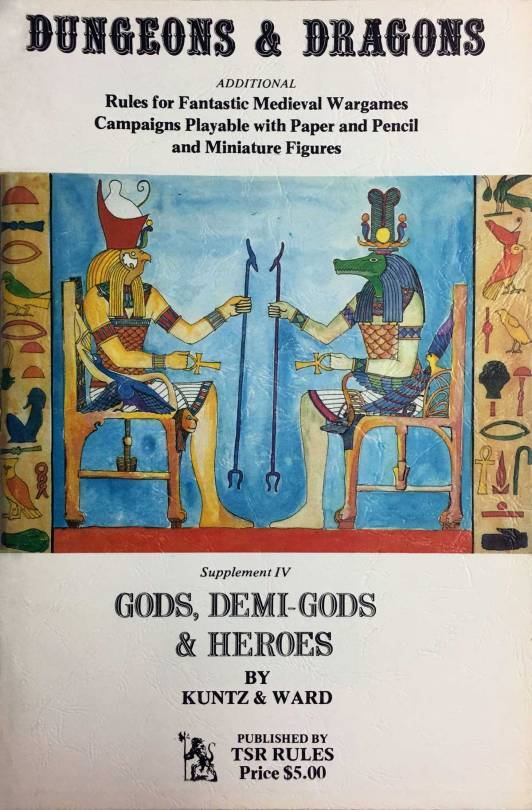
Old time religion -- Dungeons & Dragons Supplement IV: Gods, Demi-Gods & Heroes by Rob Kuntz and Jim Ward, TSR, 1976
#OD&D#Gods Demi-Gods & Heroes#Rob Kuntz#Jim Ward#D&D#Dungeons & Dragons#dnd#Egyptian Mythology#Ancient Egypt#1970s#TSR#Dungeons and Dragons
198 notes
·
View notes
Text

Cover illustration by Greg Bell
#greg bell#illustration#illustrations#dungeons & dragons#supplement I#supplement 1#greyhawk#gary gygax#rob kuntz#beholder#warrior#dnd#d&d#1970s#70s#fantasy#role playing game#tsr#rpg#pen and paper#monster#monsters#don's hobbies & toys#dons hobbies & toys#don's hobbies and toys#dons hobbies and toys#cover art
50 notes
·
View notes
Text
Was anyone at The Outsiders Musical on 1/16 and filmed the finale?! My little sister was gifted the book by Josh Strobl and I really would love to get the video! Thanks 😋
#the outsiders#jason schmidt#josh strobl#the outsiders musical#dan berry#brent comer#maggie kuntz#emma pittman#stay gold ponyboy#rob lowe#Paul and darry#parry
3 notes
·
View notes
Text
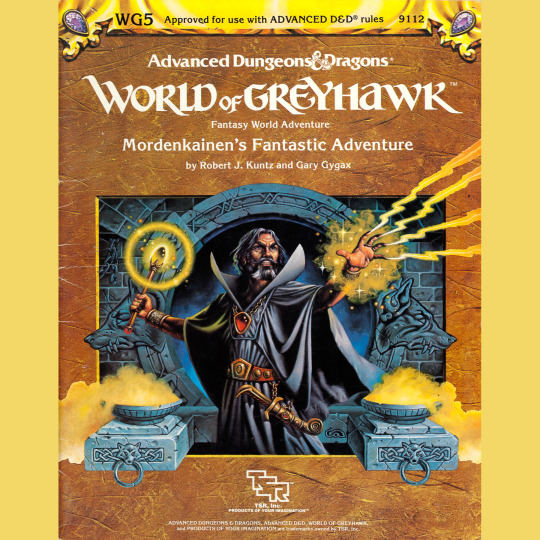
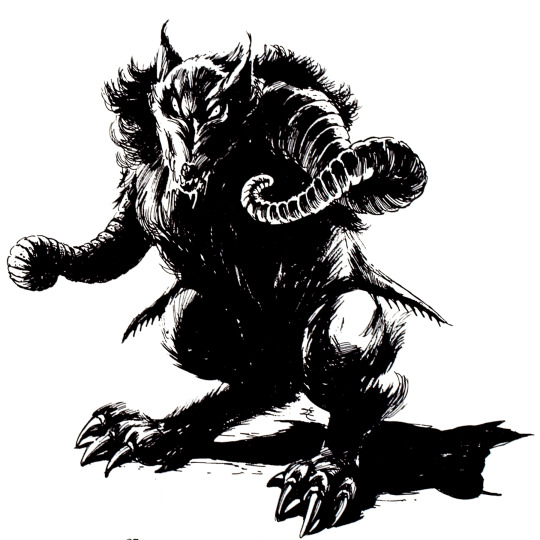
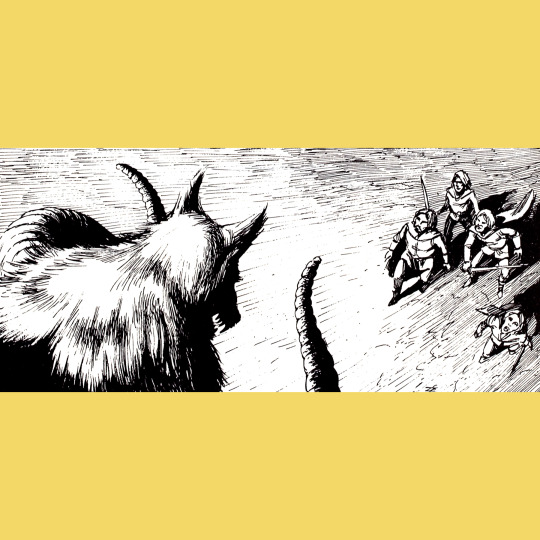
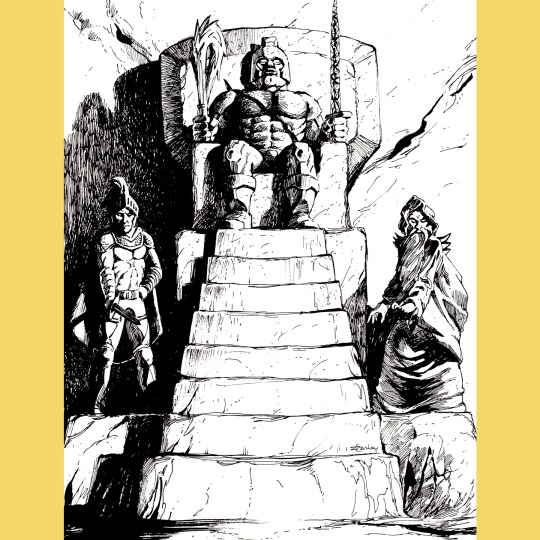
WG5: Mordenkainen’s Fantastic Adventure (1984) is a pretty old school adventure. Literally! Though adapted to the Greyhawk setting for publication, it actually draws primarily on a dungeon designed by Rob Kuntz for his Castle El Raja Key. Gygax experienced it as a player and it proved more than Mordenkainen was capable of (for a time, anyway). Considering that history, the framework of the adventure was likely around ten or twelve years before publication, making it a glimpse of an earlier time and design sense.
In the preface, Gygax calls it a hack and slash adventure, and that is pretty true. Three levels, all action. Lulls in the action are are punctuated by Tomb of Horrors-style death traps and the occasional puzzle (the initial entrance of the dungeon is one such puzzle, sealed with impossible to open doors). There’s a mad mage, there’s a demon, there are hints at a larger world of Greyhawk. There’s the option to play as some of Gary’s characters instead of bespoke PCs. Just the peak at Mordenkainen’s attributes feels somehow important.
It isn’t earthshaking, really, and I don’t love the climactic demon, but on the whole, I would probably pull this off the shelf if I wanted to run something in the “classic” mode. It has an energy that I like better than most of the more popular “classic” modules, though that might be thanks to over-familiarity. I certainly prefer it over Tomb of Horrors. The art package — a classic Caldwell cover and interiors by Easley — goes a long way in selling it, too.
#roleplaying game#ttrpg#tabletop rpg#dungeons & dragons#rpg#d&d#Greyhawk#Gygax#Mordenkainen's Fantastic Adventure
185 notes
·
View notes
Text

Source: Gary Gygax and Rob Kuntz, "Supplement 1: Greyhawk"
2 notes
·
View notes
Text
47. Various Authors - The Dragon #13 (April 1978)

Finally The Dragon is now a monthly publication! However, issue 13 isn't really the most interesting for DnD fans, it has some stuff but nothing really world changing. It starts off with an article to help you calculate the weight of things in DnD with "How Heavy is my Giant" and has another really long article on the Japanese Mythos as beings in the game, in the style of the Deities and Demigods supplement.

More interesting is an article by Rob Kuntz about how Tolkien is definitely and influence in D&D but neither is he the only one, he isn't even the main influence. This is kind of brought home by the fact that the name Tolkien is misspelled in the article's title (it's spelled as "Tolkein"). However Kuntz has a point that Fritz Leiber of Robert E. Howard are just as important influences in the game, particularly as it comes to the "grimdark" setting and magic systems.

Other than that there's a collection of tables for demon generation, a "humorous" section on "funny" D&D songs, the usual fiction and comics and another partly humorous article on essentials to take with you when dungeon delving.

3 notes
·
View notes
Text
This "players vs. the game master" attitude got us cursed magic items, including the infamous "lol now you're a girl" belt, and dungeons with killer reputations (e.g., the Tomb of Horrors and Expedition to the Barrier Peaks), because Rob Kuntz outsmarted Gygax so much.
it's always so alarming looking at the notes on posts about people's cool experiences with ttrpgs and seeing the sheer number of people saying something along the lines "unfortunately this relies on the assumption that the players aren't huge shithead assholes who are actively trying to fuck each other over and make sure their gm has a bad time."
like. yeah, it sure does. that's kind of a baseline assumption for me, the same way that when I invite friends to a potluck I feel perfectly safe assuming that no one is going to spit in the food. do you guys actually like the people you're doing recreational activities with? blink if you need help.
10K notes
·
View notes
Text

This lovely image comes from the blog Beyond Fomalhaut in their review of a reprint of El Raja Key, one of the first and most iconic dungeons in the early years of Dungeons and Dragons. The dungeon itself is fantastic and lovingly crafted but the thing the caught my eye was the map.
This map, in one image, encapsulates just about all the reasons I am enthralled by the OSR and old school RPG communities. This lovingly hand-drawn map of a region dramatically called the Barbarous Coast! tells a story in a way most glossy digital maps never will. I imagine each location on the map being drawn in as the party finds it, every town and forest and river having some significance, some story behind it, some story you could really understand if you were there.
I doubt Rob Kuntz, who drew this map, worried overly much about whether his world was original enough, or thought too much about story arcs in his campaign beyond the story that the players made through their adventures. He certainly never suffered from comparing himself to other GMs, given that he was just about only one around at the time.
As a Gen Z RPG nerd, it's easy to fall into the trap of believing your campaign has to some broad, sprawling fantasy epic, or an exploration of your own Totally Original Campaign Setting. But this map is still what RPGs are about for me. Grown, adult people with colored pencils making up places like Fang Forest in the Barbarous Coast, and playing imaginary games about the fantastic adventures that take place therein.
1 note
·
View note
Link
Everybody calls Rob Kuntz last, he says. Those who want to know about the history of Dungeons & Dragons start with co-creator Gary Gygax’s kids, one of Gygax’s biographers, or D&D publisher Wizards of the Coast. As they’re wrapping things up, they might get around to dialing up Kuntz, a 63-year-old game designer. And once they call him, he tells them the same thing: Everything they know about the creation of the tabletop role-playing game is, in his opinion, sorely mistaken or flat-out wrong.
“There’s a myth that’s been propagated in the industry,” Kuntz told Kotaku during an interview in February of this year. “If you keep digging into this, you’re going to come up with a story that will enrage people and expose the truth.”
A new documentary out last week, Secrets of Blackmoor, attempts to get to the bottom of who really incepted the world of fantasy role-playing. It’s a question that Kotaku has been investigating as well, as part of our ongoing research into the massively popular game, which also resulted in our profile of Gary Gygax’s widow Gail earlier this year and a series of interviews with the first women who worked on D&D.
“Certain questions will open up a shitstorm,” Kuntz said. “You’ll peel back the onion to the smelly part.”
When we first spoke, Kuntz made one thing very clear: He doesn’t buy the story usually told about how Dungeons & Dragons was born, because he was there to witness the reality that was spun into the mythos.
“We are in a mass delusion that it’s all Gary, that he’s the father of role-playing games,” he said. “Humans do not like to admit they’ve been hornswoggled, lied to, cheated, or fooled.”
More at link.
tl;dr version: Dave Arneson was to Bill Finger as Gary Gygax was to Bob Kane.
119 notes
·
View notes
Text
Pathfinder Drops Phylactery From In-Game Terminology
Paizo has discontinued the use of the word "phylactery" in its Pathfinder publications due to the word's origins as an item used in real-world religious customs. In the most recent chapter of Strength of Thousands, Pathfinder 2E's current Adventure Path, Paizo noted that it would use the phrase "soul cages" to describe the physical item that a lich stores their soul in. Traditionally in Dungeons & Dragons, Pathfinder, and other fantasy tabletop games, the item was known as a phylactery.
In the table of contents to Doorway to the Red Star, Paizo explains their reasoning: "Starting with the lich Dwandek in this adventure, we're making a long‑overdue terminology change. The use of the word "phylactery" as the item in which a lich stores their soul is both inaccurate and inappropriate given the evil nature of liches and the word's connotation with real‑world religious practices. Instead, liches in Pathfinder Second Edition store their souls in objects called soul cages—an act that liches see as an ultimate act of defiance against the cycle of life and death. Liches consider their souls not as things to cherish, but as weaknesses that, once locked away in a cage, allow for eternal undeath. Apart from this change in name, the mechanics for how liches function remain unaltered."
Gary Gygax and Rob Kuntz introduced what modern fantasy fans recognize as the lich in the pages of Greyhawk, the first-ever rules expansion for Dungeons & Dragons. Their version of the lich (which to that point was used as a generic synonym for the undead) was that of an undead magic user who retained their abilities from beyond the grave. Gygax expanded upon the lore of the lich in the original Monster Manual, specifying that liches were magic-users who through foul sorcery had conquered death by placing their soul inside an arcane box. Gygax called this box a phylactery, a word also used to describe a leather box worn by some Jews while praying that contained passages of the Torah. Many Jews alternatively referred to a phylactery as a tefillin, and the word "phylactery" is associated with a tefillin through the Greek New Testament. It's noted that subsequent descriptions of the phylactery in Dungeons & Dragons even went as far as to note that the box contained spells written on strips of paper, similar to how a tefillin contains passages of the Torah inside of it.
Because liches are depicted almost universally as evil creatures in Dungeons & Dragons and other fantasy properties (some methods of becoming a lich involve the ritual sacrifice of an infant) and because the phylactery is usually depicted as an evil artifact, some have pointed out that using the word seems problematic. While the word phylactery has historically had other uses than as an item used in Jewish religious practices, at least some game designers have either consciously or unconsciously appropriated the tefillin when describing the item used to hold a lich's soul. Given how much Anti-Semitic imagery and symbolism crops up in fantasy literature either through ignorance or deliberate bigotry, Paizo's move seems reasonable and their new terminology makes a lot of practical sense.
We'll likely hear much more about soul cages, as Paizo plans to release Book of the Dead, a new rulebook covering the undead, next year.
[SOURCE]
66 notes
·
View notes
Text

Game designer Jim Ward has passed away at age 72. He was the author of many early D&D titles and Dragon articles, including Supplement IV: Gods, Demi-Gods & Heroes for OD&D (1976) and Deities & Demigods for AD&D (1980), both with Rob Kuntz, and the AD&D book Greyhawk Adventures (1988).
He created the first sci-fi RPG, Metamorphosis Alpha (1976), and cowrote the thematically related Gamma World (1978) with Gary Jaquet. Anagrams of his name appear in Greyhawk lore as the mage Drawmij, a member of the Circle of Eight, and the Dramidj Ocean in the far northwest corner of the map.
#Jim Ward#James M Ward#gaming history#D&D#dnd#AD&D#Deities & Demigods#Drawmij#Dramidj Ocean#Gamma World#Greyhawk Adventures#in memoriam#Dungeons & Dragons#TSR#Greyhawk#Dungeons and Dragons
306 notes
·
View notes
Text
Let's not forget Dave Arneson who invented the idea of Dungeon Master
10 notes
·
View notes
Text
@bossasbatch as plotted
When Rob blinked open his eyes and didn’t immediately recognise his surrounding, he panicked. The last time he had been conscious he had been in the abandoned house somewhere in the middle of nowhere. Last time he had been conscious he had been at the mercy of him. Capatain Kuntz. Not an authorated Gestapo operation. Naturally not. The Gestapo needed information, needed his answers. What use was a full Colonel of the US Air Force without being able to talk?
No, Kuntz was a madman, bloodthursty and brutal. One day he’d decided Rob’s incessant smart talking and quick tongue got on his nerves. So he’d cut it out.
The leg was broken, the left one, and badly infected at that. Another one of Kuntz temper tantrums. He’d taunted Rob afterwards how with how bad it was looking they’d probably have to take it off, what a pity.
And now? No he was some place else, in some bed and that alone was already enough to send him into a spiral of panic before he had a chance to recognise who it was, sitting by his bedside.
5 notes
·
View notes
Text
Guest Post on RPG Systems from Rob Kuntz
Guest Post on RPG Systems from Rob Kuntz
View On WordPress
0 notes
Text
That's how they were originally run!
It was a combination of tournament games where different parties would compete to see who got the furthest before they all died, and games with ongoing character generation where you'd expect things like "Bob the Fighter died, and now his twin brother Rob has shown up to carry on his quest".
Alternatively you can do what Rob Kuntz did with his character Robilar, and force some orcs in ahead of you at swordpoint to detect traps with their faces. (Once they all died he just played very slowly and didn't interact with things he didn't need to.)
I suspect one way to make it "not boring" is to have players who enjoy the game of "how can I determine which objects are safe to interact with without putting myself at risk?"
so a big fat disclaimer here is that i’ve never actually played d&d, only a little bit of gurps here and there, but: i see people talk about old modules like tomb of horrors that have stupidly difficult puzzles and extremely high death rates, and how un-fun it is, and part of me can’t help but wonder if there isn’t a way to make that kind of dungeon crawl fun. i mean, there are whole swathes of computer games whose shtick is “this is stupidly hard and you will die a lot and you must learn to embrace failure,” and i wonder what things those games do right that you could translate to a tabletop setting, to make that sort of thing very challenging (for the sort of person who is into that), but not boring, which is really the thing you want to avoid.
72 notes
·
View notes
Text
Herbalism & Alchemy - Revision 0.2
Herbalism & Alchemy – Revision 0.2
Herbalism & Alchemy Revised Version 1.2 – Revision 0.2, First Draft Credits Revision by ViCaelestis Original Supplement Designer: Dalagrath Original Flavor Texts: Dalagrath, gamer4maker, Smigss, Shr1mp Based on the original D&D game created by E. Gary Gygax and Dave Arneson With Brian Blume, Rob Kuntz, James Ward, and Don Kaye .. Contents The Basics Herbalism3 Alchemy5 Herbalism &…
View On WordPress
0 notes